The Pyramid of Djoser Was Designed by the World’s First Multi-Genius
This African history is often omitted from textbooks.
Listen and subscribe on Apple Podcasts, Spotify, and all major podcast apps.
Baudelaire Ceus: So last summer, I went to Egypt with my then-girlfriend. I proposed on a Nile River cruise, which was really dope. So now she’s my fiance. Aside from that, we did all the touristy stuff. I mean, you can’t go to Egypt and not do the tourist. There’s just so much history there. We went to see the Sphinx, Pyramid of Giza, the Egyptian Museum. But what really stood out to me from the trip was this other pyramid we saw. It was actually the first pyramid.
Dr. Anthony Browder: This is the world’s first example of architecture made of stone. It is the oldest building in the world, and it is still standing today.
Baudelaire: The pyramid of Saqqara, aka Djoser’s Pyramid, aka the Step Pyramid. It was incredible to see, but what really stuck with me was the guy who designed it.
Dr. Anthony Browder: And it was created by an African, Imhotep, for an African king by the name of Djoser.
Baudelaire: Imhotep. At the Egyptian Museum, when we were talking Egyptian medicinal practice, I heard this name again, Imhotep. And when our guide was telling us about the ancient Egyptians’ understanding of astronomy, there he was again, Imhotep, Imhotep. A multi-genius who lived 2,000 years before ancient Greece was even a thing. A genius whose work in astronomy, medicine, and architecture actually influenced the Greeks. Imhotep, an ancient genius who was African.
Dr. Browder: So these points cannot be overlooked if we’re really going to get to the root of this history and talk about it with clarity and honesty.
My name is Baudelaire, and this is Atlas Obscura. A celebration of the world’s strange, incredible, and wondrous places. Today, I’ll talk with Dr. Anthony Browder, a world-famous historian and Egyptologist to get the history of the first pyramid and the story of the man who designed it, Imhotep, a multi-genius who lived 4,700 years ago.
This is an edited transcript of the Atlas Obscura Podcast: a celebration of the world’s strange, incredible, and wondrous places. Find the show on Apple Podcasts, Spotify, and all major podcast apps.

Baudelaire: So the day my fiancé and I saw all the pyramids, it was just the two of us and a tour guide. He was cool. I mean, I wouldn’t say he was the greatest guide ever. Sometimes he’d be talking about some aspect of the pyramids and he’d say, “nobody really knows.” But the thing is, I knew some of the things he was telling us that nobody knows. And I knew this stuff because I’ve read the works and listened to the lectures of this guy.
Dr. Browder: Yeah, I made my first trip to Egypt in December of 1980, and I made my 64th trip to Egypt just last month.
Baudelaire: This is Anthony Browder. Now, I could go on and on about how much of a fan I am of Dr. Browder. I mean, this man has taught me so much. And to be honest, I tried not to stan too hard when talking to him. I kept my cool. He’s been to Egypt 64 times and mainly he goes to do archeological work like excavating and restoring. And he’s also written six books about ancient Egypt. He’s actually discovered new tombs, but each time he does discover one, he refuses to be the first to enter the space.
Dr. Browder: And so what I do is to have my daughter go into the sacred spaces first so that history will record that my daughter, Atlantis Tye Browder, was the first African-American inside of that tomb.
Baudelaire: That’s so dope. I should also note that his daughter has been a part of the team for the past 22 years. Today, she has two books of her own about Egypt. But one thing about that word “Egypt”: Dr. Browder explained to me that Egypt wasn’t actually the name of the land we now call Egypt.
Dr. Browder: If we look at the almost 3,000 year old history of Kemet, we realize several things. That one: Kemet is the original name for the country that the Greeks called Egypt.
Baudelaire: So throughout this episode, know that Egypt and Kemet are the same place. Now, when you’re talking ancient Kemet, there’s about 3,000 years of history. That’s a lot. And we definitely don’t have time for all that in this episode. But what you should know is they split into three main periods: Old, Middle, and New. But when you’re talking about pyramids, you’re really only talking about the Old Kingdom, which was from 2700 to 2200 BC. That’s when all the pyramids were built. But now, let’s pause on that word “pyramid” for a second. Because just like the word Egypt, pyramid isn’t the original name.
Dr. Browder: Pyramid is a Greek word. And so what we have to do in order to understand what these structures were and why they were created is understand what the structures were called in their original language. So in the language of Kemet, that structure was known as mir, m-i-r. And mir is a word which means the place of ascension. Mirs were essentially grave markers that were placed above the tomb of a king or queen. And so the purpose of that mir was to facilitate the ascension of the soul buried underneath it into heaven.
Baudelaire: And here’s what’s insane: They weren’t just aiming these mirs or pyramids just anywhere. They were built according to some really precise astronomical science so that they were aimed at a specific cluster of stars, stars that are a part of what we now call the Orion constellation.
Dr. Browder: That is the portal to the ancestor realm where they will be born again into the next life.
Baudelaire: And remember, this pyramid at Saqqara is the first one, the first mir aimed at this ancestral realm. The pharaoh at the time was Djoser, and Dr. Browder explained to me that Djoser wasn’t exactly the most noteworthy leader of ancient Kemet.
Dr. Browder: We know more about Djoser because of the work that was done by his prime minister, a man by the name of Imhotep.
Baudelaire: Imhotep. He wasn’t just the prime minister Djoser. He was the architect who designed this mir or pyramid that would be Djoser’s ultimate burial place. Before Djoser, kings were buried under something simpler, a massive rectangular bench-like structure. Basically what Imhotep did was stack six of these on top of each other with each one being smaller than the one before it. That’s how you end up with that pyramid shape but with steps instead of those smooth sides. It wouldn’t be until a couple hundred years later, actually, that they managed to make the pyramids in the way that we all think of them. But still, the pyramid of Djoser at 200 feet in height was an architectural breakthrough. And it wasn’t just the size or the pyramid shape. In the courtyard of the pyramid, we find stone columns. Now I don’t know about y’all, but I learned in school that the Greeks were the first to use columns.
Dr. Browder: This preceded Greek architecture by, at least conservatively speaking, at least 1800 years. And all of this sprang from the mind of this African genius by the name of Imhotep.
Baudelaire: Imhotep.
Dr. Browder: Imhotep is an African word, which means he who comes in peace. So Imhotep is regarded in history—and not just African history—he is regarded in history as the world’s first multi-genius: prime minister to the king Djoser, astronomer, architect, engineer, vizier, philosopher. It is said that Imhotep is a person who wrote the phrase, “Eat, drink, and be merry, for tomorrow you will die.”
Baudelaire: All of that in one lifetime, and we’re not even done. On top of all that …
Dr. Browder: Imhotep is also regarded as the first physician in the history of human records.
Baudelaire: Imhotep treated a lot of diseases in his lifetime, including tuberculosis, appendicitis, gallstones, gout, and arthritis. He also performed surgery and may have founded the first ever school of medicine. This dude is the true father of medicine, but with the way history has been written, he doesn’t really get the credit he deserves.
Dr. Browder: After the Greeks conquered Kemet in 332 and renamed the country Egypt, Imhotep was—the memory of Imhotep resurfaced, as the Greeks were obsessed with studying the knowledge of Kemet and incorporating that into their knowledge of the world.
Baudelaire: What I learned is that the Greeks were the fathers of society, and pretty much all ancient discovery was somehow attributed to them. What was left out was what Dr. Browder just said. The Greeks learned from the Egyptians and studied what they could from Egyptian society.
Dr. Browder: And so the Greeks began to view Imhotep as a god. And Imhotep was mirrored in Greek history by the Greek personality Asclepius, who was known as the Greek god of medicine. And so in the Hippocratic Oath, Hippocrates was the Greek, so-called Greek father of medicine.
Baudelaire: To this day, all doctors have to take the Hippocratic Oath.
Dr. Browder: The first line of which says, I swear by Apollo and Asclepius, the god of medicine. Well, Asclepius is the Greek name for Imhotep. So all one has to do is to recover the original African names of Greek personalities, and you can begin to reconstruct your historical and cultural memory and have a better understanding of these names, these personalities, and what they mean.
Baudelaire: So doctors all across this country have been saying Imhotep’s name, but had no idea that it was him.
Dr. Browder: Exactly. And see, that speaks to the issue that we’ve been dealing with for all of my life, all the 70 years that I’ve been alive, and that is profound ignorance.
Baudelaire: Ignorance of the fact that Egypt is Kemet, or that the true word for pyramid is mir. Ignorance of the fact that the ancient Egyptians were African. Ignorance of the fact that the first multi-genius was African. This ignorance isn’t always intentional—I mean, most of us just go with what we were taught in school—but the truth here does make a huge difference. Learning of Imhotep and the general contributions of ancient Egypt gave me a pride in my Africanness that can’t be taken away. I mean, what if we added Egypt and all its contributions to Black History Month celebrations? That would add so much, it would completely change how we teach it. And it would also change where young Black kids begin to see themselves in curriculum. How did you feel when you first learned of Imhotep, like that this first multi-genius was Black? Like, how did that make you feel?
Dr. Browder: Well, I felt proud. You know, I felt proud. And one of the reasons why I was so elated was that when I was a high school student in Chicago, I had aspirations of being an architect. I didn’t know about Imhotep until almost a decade later. But as I look back on my interest in architecture, as I look back on my interest in art, I realized that while there aren’t very many African-American architects, it’s predominantly, you know, white field dominated by white males. To know that that field, that science was initiated by a person of African ancestry is quite fulfilling to me.
Baudelaire: That’s amazing. That is beautiful. Well, thank you so much, Dr. Browder. Yeah, you know, I’m just, I’m gonna tell my kids that I spoke to you.
Dr. Browder: All right. Well, brother, I appreciate you reaching out. I appreciate you including me in this podcast. And I trust that it touches the heart of many young people who are encouraged to study history. And I want them to know that the genius of all of their ancestors dwells within them. It dwells within their DNA. And all we need to do is to create the right environment for those ancestors’ voices to speak to us.
Baudelaire: Special thanks to Dr. Anthony Browder for taking the time out to speak to me for today’s episode.
Listen and subscribe on Apple Podcasts, Spotify, and all major podcast apps.
This podcast is a co-production of Atlas Obscura and Witness Docs. Our production team includes Dylan Thuras, Doug Baldinger, Chris Naka, Kameel Stanley, Willis Ryder Arnold, Sarah Wyman, Amanda McGowan, Manolo Morales, Johanna Mayer, Gianna Palmer, Tracy Samuelson, John DeLore, Peter Clowney. Our technical director is Casey Holford. Our theme and end music is by Sam Tindall. This episode was sound designed and mixed by Luz Fleming. If you want to learn more, be sure to visit atlasobscura.com.
This story originally ran in 2022; it has been updated for 2025.


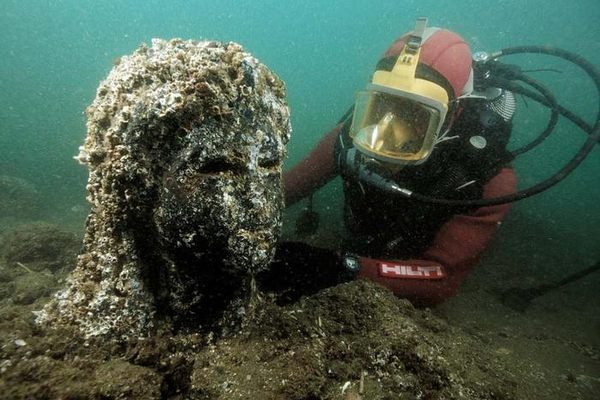

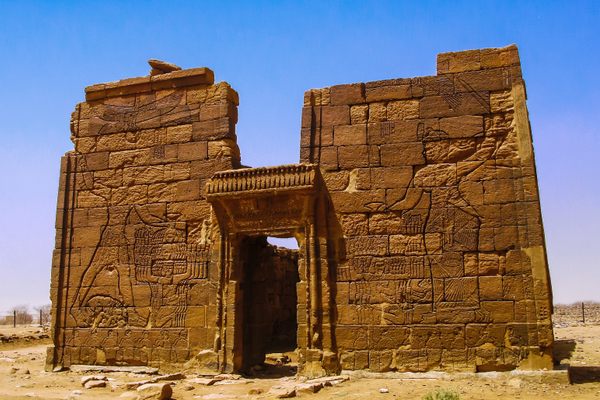











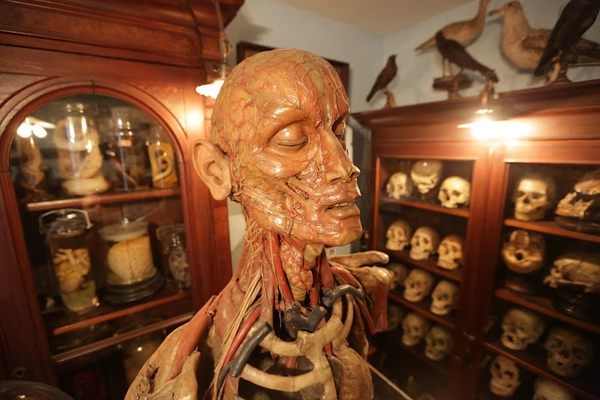





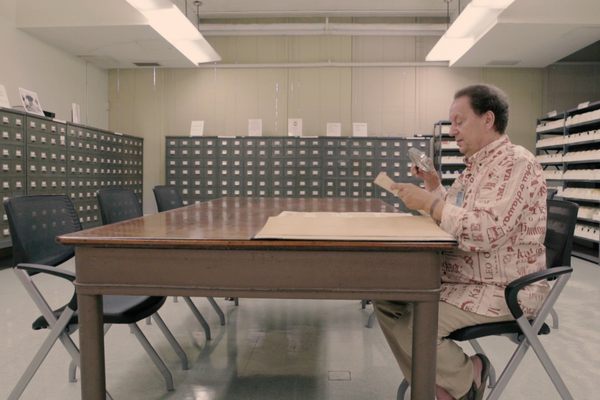





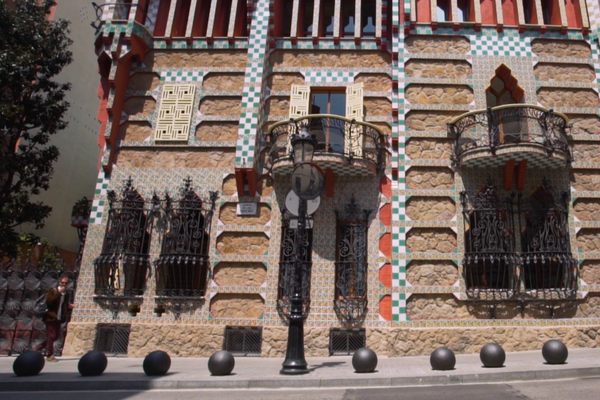




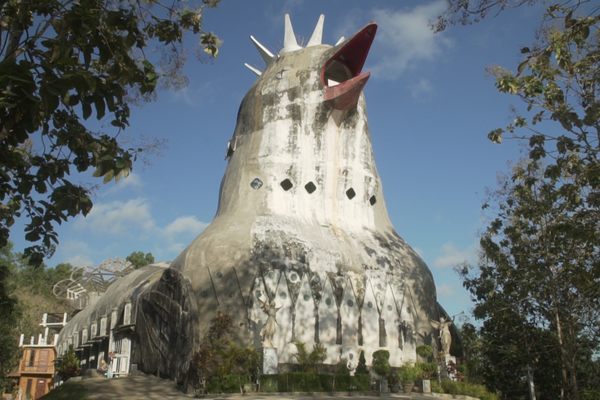



Follow us on Twitter to get the latest on the world's hidden wonders.
Like us on Facebook to get the latest on the world's hidden wonders.
Follow us on Twitter Like us on Facebook